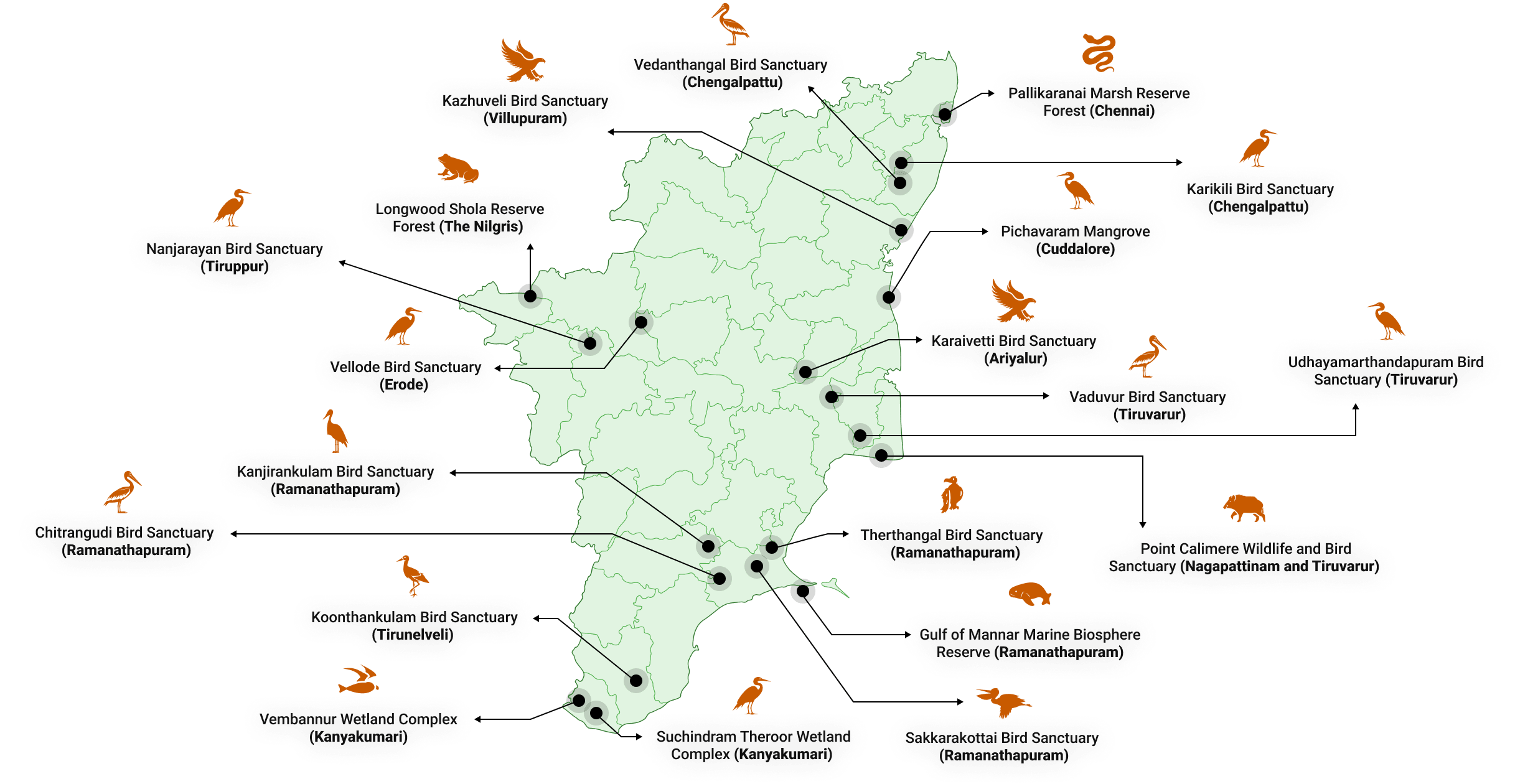Initiatives and Targets
Net Zero Economy:
One that either emits zero greenhouse gas emissions or compensates for emissions using strategies like tree planting and carbon capture.
Blue Carbon Ecosystem:
Blue carbon ecosystem, specifically, mangrove forests, intertidal marshes, and seagrass beds are coastal wetlands that continuously take
up atmospheric carbon dioxide, storing large amounts of this carbon in soils and sediments.
Biodiversity Index:
A quantitative metric designed to assess the variety and relative abundance of different species or biological attributes within a
defined geographic area or ecosystem.
Nature-Based Solutions:
Actions aimed at protecting, conserving, restoring, and sustainably managing natural or modified terrestrial, freshwater, coastal,
and marine ecosystems, which address social, economic, and environmental challenges effectively and adaptively, while simultaneously
providing human well-being, ecosystem services, resilienc,e and biodiversity benefits.
Meendum Manjappai Campaign:
“Meendum Manjappai”- “a call for back to basics and into the future” with traditional nature-based solutions was launched as a
“People’s Campaign against throwaway plastics” by the Hon’ble Chief Minister of Tamil Nadu in December 2021 to create awareness
among the people and to promote alternatives to plastic, alongside enforcement of ban on SUPs.
Thooimai Mission:
"Thooimai Mission" for sustainable waste management in the State and revolutionize waste management by transitioning from
dumping to depositing, creating a system where waste is responsibly transformed into resources, fostering circularity,
environmental regeneration, and community well-being. This vision emphasizes the shift from waste disposal to resource
recovery, aligning with regenerative principles and the broader goals of sustainability and societal progress.
Demography and Economy
GDP at Constant Price:
Gross Domestic Product at constant price measures the value of all final goods and services
produced within a country in a given period, adjusted for inflation, using the prices from a
base year. Base year used for calculation: 2011-12.
GDP at Current Price:
The Gross Domestic Product (GDP) at current prices measures the value of all final goods and
services produced within a country in a given period, valued at the prices prevailing during
that same period.
GVA:
Gross Value Added (GVA) is the value that producers have added to the goods and services they
have bought. When they sell their wares, producers’ income should be more than their costs,
and the difference between the two is the value they have added.
Ecology and Land Resources
Agro-climatic zone
is a geographic area with similar climate, soil, and topography
Tamil Nadu is divided into 7 agro-climatic zones:
High Altitude and Hilly Zone, High Rainfall Zone, Southern Zone, Cauvery Delta Zone, Western Zone, North Western Zone, North Eastern Zone
Ramsar Sites:
A Ramsar site is a wetland site designated to be of international importance under the Ramsar
Convention, also known as "The Convention on Wetlands", an intergovernmental environmental
treaty established in 1971 by UNESCO, which came into force in 1975. It provides for
national action and international cooperation regarding the conservation of wetlands and the
wise sustainable use of their resources. Ramsar identifies wetlands of international
importance, rare or unique wetland types, or for importance in conserving biological
diversity, especially those providing waterfowl habitat
GHG Emission
GHG:
Greenhouse gases (GHGs) like carbon dioxide (CO₂), methane (CH₄), nitrous oxide (N₂O), and fluorinated gases that trap heat in the atmosphere, contributing to global warming. As greenhouse gases have different global warming potential, their impact is typically converted into a CO₂ equivalent to make comparisons meaningful.
Pichavaram mangrove drone view:
Department of Environment and Climate Change (DoECC)
Banner’s Image credit
Pichavaram mangrove drone view:
Department of Environment and Climate Change (DoECC)




 Launch Date: 31st October 2025
Launch Date: 31st October 2025





















